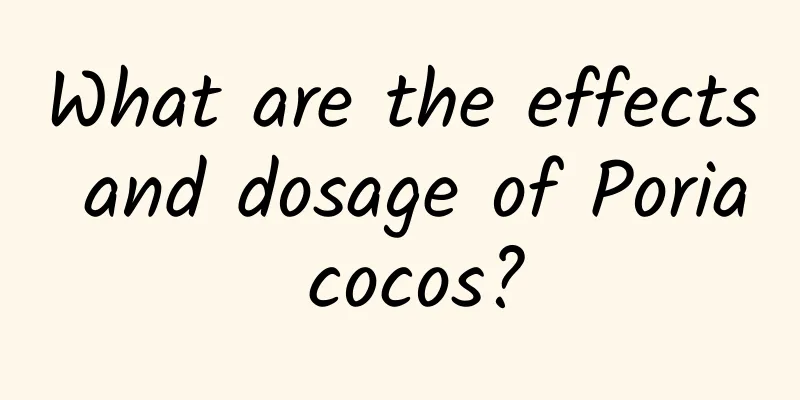The efficacy and function of bamboo palm

|
Recently, major TV channels have launched various health programs, and food programs have also introduced special health-preserving dietary therapy methods. All aspects show that the concept of health preservation is gradually deepening in people's understanding. Next, we will introduce a health-preserving medicinal material, bamboo palm. 【English name】 palm [Other names] Tendon bamboo, palm tree, Mei San [Source] Medicinal material source: The leaves of the palm plant bamboo. [Original form] Brown bamboo, a clumping shrub, 2-3m high. The stem is cylindrical, noded, 2-3 cm in diameter, and covered with brown, reticulated, coarsely fibrous leaf sheaths on the upper part. Leaves are alternate; petioles are 8-20cm long, initially covered with chaff-like hairs, slightly flattened, and elliptical in cross section; leaves are deeply palmately lobed, with 4-10 lobes, unequal, with 2-5 ribs, united at the base 1-4cm, 20-30cm long or longer, 1.5-5cm wide, broadly linear or linear-elliptical, broad at the apex, with irregular teeth, small brown sharp teeth on the edges and veins, and numerous and obvious transverse veins. Fleshy inflorescence, up to 30cm long, much branched, spathes tubular, 2-3 pieces, borne on the peduncle and inflorescence axis, membranous, densely covered with brown curly hairs. The flowers are dioecious, with male flowers being smaller, calyx 1.5mm long, with ovate lobes; corolla lobes being ovate, thick, and 1mm long; stamens 6; female flowers being larger, ovoid-spherical. The berries are spherical, 8-10mm in diameter. The seeds are spherical, with the embryo located near the base opposite the seed ridge. Flowering period is June-July. [Habitat distribution] Distributed from southeast to southwest my country. [Cultivation] Biological characteristics: It likes warm and humid climate and well-ventilated environment, is shade-tolerant and not cold-tolerant. It is advisable to choose moist, well-drained, humus-rich acidic soil for cultivation. [Chemical composition] The leaves contain saponaretin (also known as isovitexin), methylprotodioscin, methylproto-pb, and methylprotorhapissapo-nin. 【Nature and flavor】 Sweet; astringent; neutral [Entry] Enters the liver and kidney meridians 【Functions and indications】Astringent and hemostatic. Mainly used for epistaxis, hemoptysis, hematemesis, and excessive postpartum bleeding [Usage and Dosage] For oral administration: grind calcined charcoal into powder and take with water, 3-6g. [Discussions by various scholars] "Xinhua Compendium of Materia Medica": The fibrous roots of the thick brown bamboo are used for bone setting. 【Excerpt】 Chinese Materia Medica The above is a brief introduction to bamboo palm. Through this we can understand that bamboo palm contains a variety of nutrients, which are very effective in treating and preventing some diseases. In daily life, everyone can eat it under the guidance of relevant people. |
<<: The efficacy and function of summer
>>: The efficacy and function of palm seeds
Recommend
Best Herbal Medicine for Itchy Skin
Skin itching is a common occurrence. Many people ...
Calculate the Earth's radius? All you need is a photo and some high school knowledge!
Based on a photograph of the sunset over a lake, ...
What are the effects and precautions of tiger skin plaster?
Plasters have always been one of the most essenti...
“Why do northerners eat dumplings during every festival?”
Today is New Year’s Eve! Do you plan to eat dumpl...
The efficacy and function of coriander in western Hubei
We know that there are many kinds of Chinese medi...
Imprinting effect: Why do newborn ducklings regard the first creature they see as their mother?
Ducklings are lovely waterfowl, and their living ...
Effects and functions of Dendrobium
It is very common in life that different medicine...
The transmission chain of the Xi'an epidemic has increased to 242 cases! 6 places have been linked. How did the epidemic spill over?
On the morning of December 23, Yuncheng, Shanxi r...
China's cross-border e-commerce B2B market is expected to reach 13.9 trillion yuan in 2025
The report "Digital Platforms Help Small and...
What is the maximum dosage of processed aconite?
The efficacy of processed aconite is very signifi...
What is the effect of soaking ear root in water
When it comes to Houttuynia cordata, everyone mus...
The biggest full moon of the year appeared in the night sky last night! Where did this "fat" moon come from?
Review expert: Jing Hairong, researcher at Beijin...
The "pigeon tree" from China has amazed all of Europe
In the spring of 1869, a French missionary named ...
How much should Astragalus be consumed?
There are many common Chinese medicinal materials...
It has thousands of wonderful benefits on the tip of the tongue
The foot is the organ with the highest weight on ...









